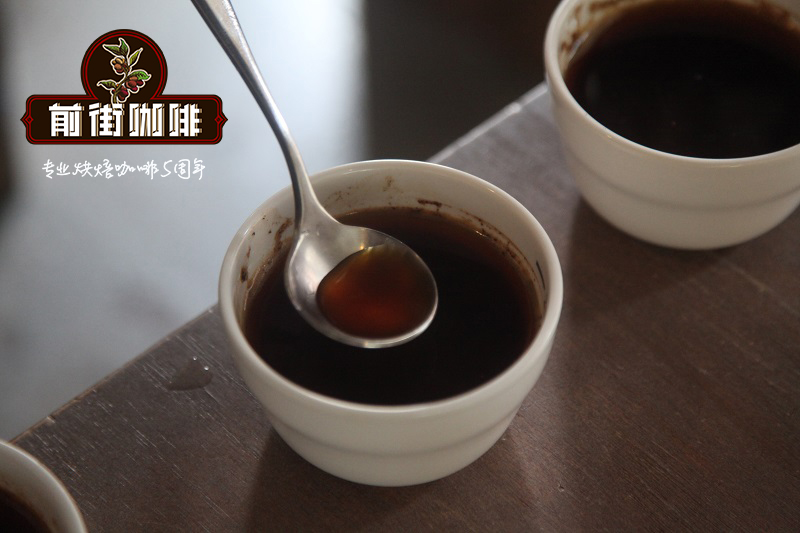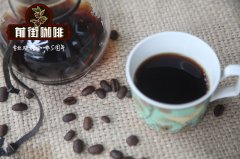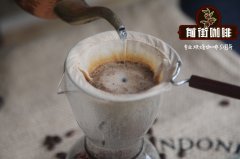Chateau Santaine, Camo District, Minas, Brazil Santa Ines | Yellow bourbon PN treatment flavor?

Professional coffee knowledge exchange more coffee bean information please follow the coffee workshop (Wechat official account cafe_style)
Chateau Santaine, Camo District, Minas, Brazil Santa Ines | Yellow bourbon PN treatment flavor?
Chateau Santaine, which is part of the Sert ã o group, is located in the boutique town of Carmo de Minas in South Minas, with excellent estates, including the Chateau Santaine and the Serto Group, which is part of Santane. The family has been growing coffee for more than 100 years, and its famous manor set a number of records in 2005, including the "highest bid" and "the most final manor". At the same time, the group has three estates ranked in TOP 10, which is not only unprecedented but also difficult to catch up with future generations, especially Sentine Manor is regarded by boutique operators all over the world as a model of Brazilian boutique estates, with fans scattered all over the world.
Saint-Tain Manor has beautiful scenery and great temperature difference in the morning and evening, and the famous fog is also an important factor in the outstanding quality of the manor. There are also sweet natural springs and well-maintained primeval forests in the manor. Because it is located in the high-altitude mountain area of the Mantiqueira Mountains Mountains, the temperature difference is large, but fortunately there is no frost damage, and the volcanic soil is fertile. The manor maintains the traditional intensive farming attitude under the leadership of Francisco Isidoro Dias Pereira. Compared with most other Brazilian estates that easily increase the output of thousands of bags, Sentain Manor is actually more concerned about the environment and the welfare of employees. The coffee planting area is less than half of the total area of the manor. They would rather concentrate on managing boutique coffee and establish a direct relationship with bean roasters, rather than wantonly expand production capacity. The picture below shows the farm staff climbing into the truck ready to leave after finishing their cherry picking on that day. Although they work hard, they are still in a happy mood and wave to us happily. I think the reason is that the Francisco family takes care of employees very much, not only building staff dormitories, but also free milk, free good coffee, a simple medical clinic, a great football field, family children go to town to go to school, but also provide free transportation, the scenery is very beautiful, it is worth visiting!
Varieties: Yellow Bourbon, Red Bourbon, Yellow Catuai, Acaia (Arcaya), Mundo Novo, Icatu, Catuai (Kaduai)
2005 COE champion; fifth in 2006 COE; Coe was shortlisted more than seven times
South Minas Sul de Minas in the producing area
Carmo de Minas where the town is located
1000 meters above sea level
Harvesting and disposal of Shengtaine Manor:
(1) hand-picked coffee cherries: the manor is located on a high-altitude hillside, which can only be picked by hand, and only ripe cherries can be picked. Please look at the photo. In addition to picking by hand, there is also plenty of room for coffee trees to grow and will not be planted too densely. The workers in the photo are harvesting red bourbon. You can see that the coffee tree is very tall, and the branches of the same tree extend over a wide range. Nowadays, the quality of boutique coffee is more demanding, in addition to hand-picking, it is also required to harvest only appropriate and ripe coffee cherries, and the other is that bees are collecting coffee nectar when they bloom.
(2) in the receiving and processing station of the coffee garden, the coffee cherries are picked up twice a day and treated with washed, pulped and spread on the same day, and when the semi-washing method (that is, Pulped Natura Method) is picked up, continuous operation is required. These operations are concentrated in Fazenda do Sert ã o, another manor of the group.
(3) after receiving the coffee cherries, wash them first, then remove the peel, and then wash them. On the same day, the coffee cherries will be spread on the cement platform for later drying.
(4) the second stage of sun-drying is machine drying, followed by a very important post-resting operation, with the goal of uniform drying to achieve a moisture content of 11% Murray 10.5%. For example, there are a number of excellent batches in the 2008-2009 production season, which is due to post-static operation, so it can not be sent to the Joyo Cup competition, which is why we were able to purchase.
(5) leave the coffee beans with shells for 30 days in order to keep the quality stable.
(6) shipped to the cooperative for post-dry treatment and classified packaging (the cooperative has precision density classifier and electronic color discrimination machine for rear dry treatment and classification)
(7) continuous quality control: implement process management and quality supervision at all stages of operation; each batch of coffee harvested and processed is independently marked with comments and retention samples from cooperative cup testers, and each batch of buyers (foreign bean bakers), there is information that can be discussed and compared with each other.
Flavor: good sweetness, obvious grease, vanilla, pineapple and hazelnut, blueberry, sweet aftertaste and hazelnut cocoa
Qianjie coffee brewing is recommended:
Filter cup: Hario V60
Water temperature: 90 degrees
Degree of grinding: small Fuji 3.5
Cooking methods: the ratio of water to powder is 1:15, 15g powder, the first injection of 25g water, 25 s steaming, the second injection to 120g water cut off, waiting for the powder bed water to half and then water injection, slow water injection until 225g water, extraction time about 2:00
Analysis: using three-stage brewing to clarify the flavor of the front, middle and back of the coffee. Because V60 has many ribs and the drainage speed is fast, it can prolong the extraction time when the water is cut off, La Paz
Important Notice :
前街咖啡 FrontStreet Coffee has moved to new addredd:
FrontStreet Coffee Address: 315,Donghua East Road,GuangZhou
Tel:020 38364473
- Prev

Santa Rosa, Santa Rosa District, Guatemala | La Loma La Loma Chateau de Guadalon, Guatemala,
Professional coffee knowledge exchange more coffee bean information please follow the coffee workshop (Wechat official account cafe_style) Santa Rosa District, Guatemala Santa Rosa | Guadalong Manor La Loma La Loma washing Patch, Kaduai seed flavor? Santa Rosa in the Santa Rosa Mountains of Guatemala belongs to the district of Jolapa, not far from the capital Guatemala City, and can be visited on the same day.
- Next

Peru 2017 Excellence Cup award-winning organic beans | JAS certified flavor of Amazon cooperative tin card?
Professional coffee knowledge exchange more coffee bean information please follow the coffee workshop (Wechat official account cafe_style) Peru 2017 outstanding cup award-winning organic beans | Amazon cooperative tin card species JAS certified flavor? Peru's northern mountains, not only mysterious and year-round clouds, there are a lot of high-quality organic coffee. Organic tin card species, cooperation from Amazon in the north
Related
- Detailed explanation of Jadeite planting Land in Panamanian Jadeite Manor introduction to the grading system of Jadeite competitive bidding, Red bid, Green bid and Rose Summer
- Story of Coffee planting in Brenka region of Costa Rica Stonehenge Manor anaerobic heavy honey treatment of flavor mouth
- What's on the barrel of Blue Mountain Coffee beans?
- Can American coffee also pull flowers? How to use hot American style to pull out a good-looking pattern?
- Can you make a cold extract with coffee beans? What is the right proportion for cold-extracted coffee formula?
- Indonesian PWN Gold Mandrine Coffee Origin Features Flavor How to Chong? Mandolin coffee is American.
- A brief introduction to the flavor characteristics of Brazilian yellow bourbon coffee beans
- What is the effect of different water quality on the flavor of cold-extracted coffee? What kind of water is best for brewing coffee?
- Why do you think of Rose Summer whenever you mention Panamanian coffee?
- Introduction to the characteristics of authentic blue mountain coffee bean producing areas? What is the CIB Coffee Authority in Jamaica?

